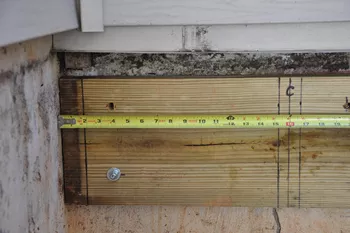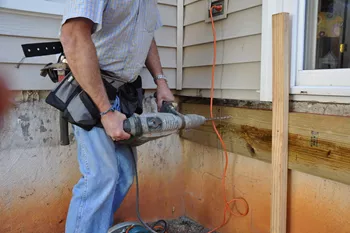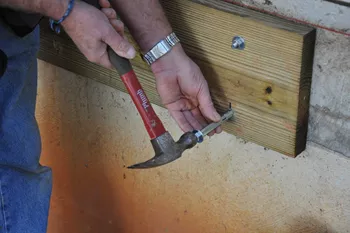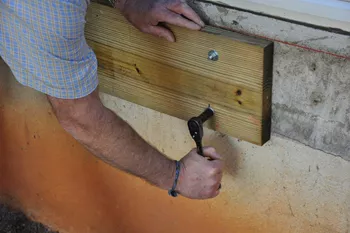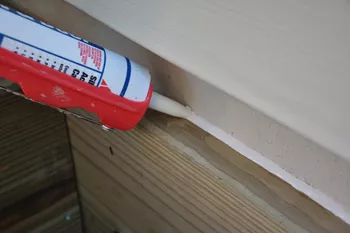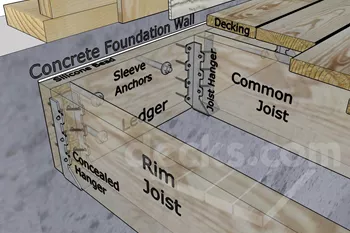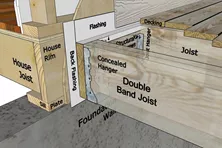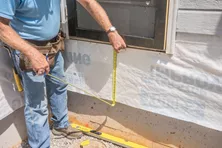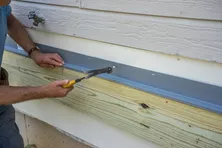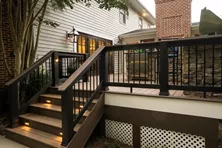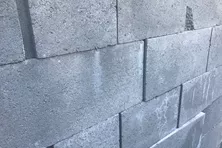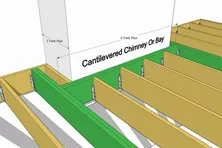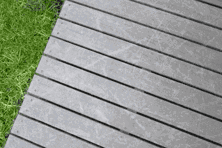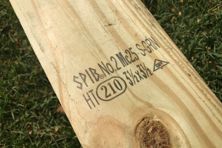Ledger Board Attachment to a Solid Concrete Foundation Wall
When attaching a ledger board to a masonry wall, you will want to first cut the ledger board to size and have two helpers hold it in place so you can drill two holes every 12” through the wood where your bolts will be installed. Mark these locations on the wall with a pencil. Now, you can drill the holes through the wall into the basement or crawl space using a hammer drill with a masonry bit. Then, just line up the board to the holes in the brick, and screw in the fasteners.
When attaching to solid masonry, you will have to install expansion anchors with a minimum diameter of ½” and set into the wall at least 2 ½”. Hollow concrete block can easily break when drilled and doesn’t leave adequate bearing support for anchors. If you are attaching to a hollow masonry wall, you can fill the cells with grout and use expansion anchors, or you'll need to install epoxy anchors in compliance with the manufacturer’s installation instructions to a minimum depth of 4 ¼”.
Protect the opening by sealing with silicon caulking on both the inside and outside of the wall, or wherever necessary. Always consult your local building inspector before attempting to attach a ledger board to a masonry wall. In some cases, you may want to avoid the hassle and uncertainty of attaching to a masonry wall. Remember, you can always install frost footings and posts beside the house to support the deck without attaching to the house.
Attaching the Ledger Board to the House Rim
Learn how to properly install a waterproof ledger board using flashing and fasteners. Check out our step-by-step video and detail drawings.
Removing the Siding
Learn the right way to remove vinyl siding for ledger board installation—without damaging your home’s exterior. Step-by-step guide with pro tips!
Ledger Board Fasteners
Compare types of deck ledger board fasteners like lag bolts, through bolts & structural screws. Learn how to choose the right fastener for your ledger board.
Deck Inspection: Checklist for Framing, Footings and More
Concerned that your deck no longer meets safety regulations? Want to know how to spot signs of trouble for your deck? Review our checklist for inspecting your deck at Decks.com.
How to Clean Outdoor Patio Cushions
Keeping your outdoor furniture cushions clean helps extend their life and makes your deck or patio area look nice. Learn how to clean outdoor cushions.
More Helpful Resources
Explore Articles by Topic
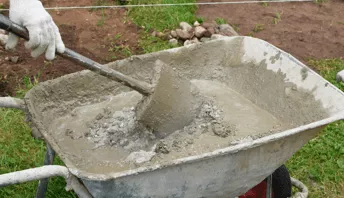
Footings
Information related to installing frost footings for decks
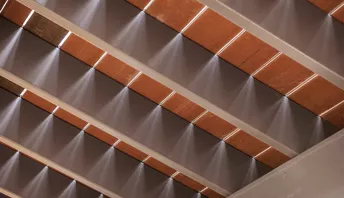
Framing
Learn structural framing methods
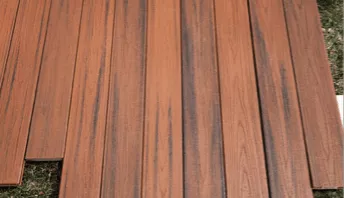
Decking
Learn about wood and composite decking materials
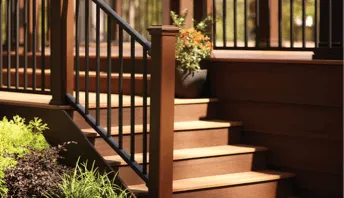
Stairs
An in-depth look at the complex issue of how to build stairs
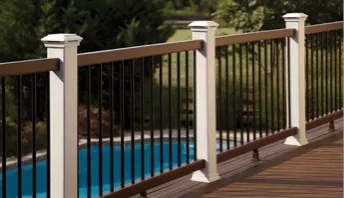
Railings
How to install guardrails and handrails to meet IRC code

Features
An overview on water drainage, benches, planters and lights
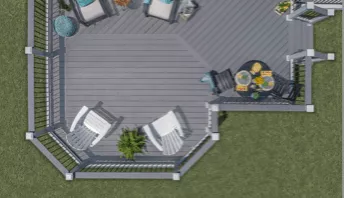
Design
The basics of deck design
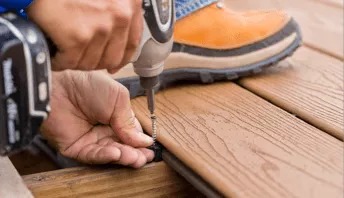
Planning
Learn about permits and working with contractors
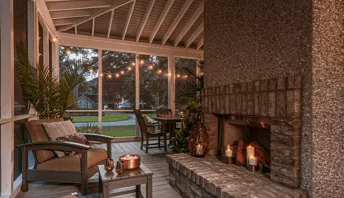
Porches & Patios
Build a covered deck to enjoy all seasons
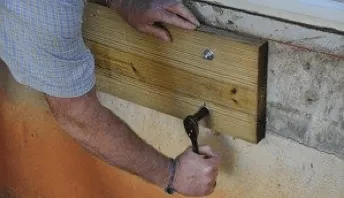
Ledger
Proper attachment techniques
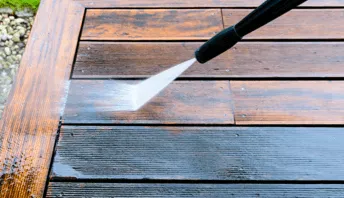
Care
Maintain your deck to maintain your investment
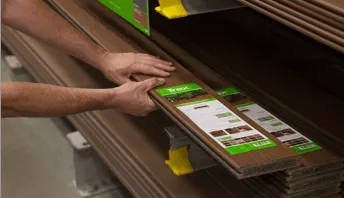
Materials
An overview on water drainage, benches, planters and lights
Attaching the ledger board to hollow block
Our inspector discusses how to attach a deck to a hollow concrete block foundation wall.
Attaching the Ledger Board to the House Rim
Learn how to properly install a waterproof ledger board using flashing and fasteners. Check out our step-by-step video and detail drawings.
Framing Around a House Cantilever
Learn a technique for framing around a cantilevered house bay to properly support your deck.
How to Remove Scuffs and Scratches from Composite Decking
Removing scuffs and scratches can help make your composite deck look like new. Learn how to fix and prevent your composite deck from future scratches.
How to Prepare & Protect Your Deck for Winter
Preparing and protecting your deck for the cold weather is important to ensure the longevity of your deck, especially in cold climates. Learn how to prepare your deck for winter at Decks.com.
How to Ink Stamps from Pressure Treated Lumber
Ink stamps seen on pressure treated wood represents where the lumber came from and its grade. Learn a few tricks to remove this ink from your wood at Decks.com.
Explore Articles by Topic

Footings
Information related to installing frost footings for decks

Framing
Learn structural framing methods

Decking
Learn about wood and composite decking materials

Stairs
An in-depth look at the complex issue of how to build stairs

Railings
How to install guardrails and handrails to meet IRC code

Features
An overview on water drainage, benches, planters and lights

Design
The basics of deck design

Planning
Learn about permits and working with contractors

Porches & Patios
Build a covered deck to enjoy all seasons

Ledger
Proper attachment techniques

Care
Maintain your deck to maintain your investment

Materials
An overview on water drainage, benches, planters and lights




